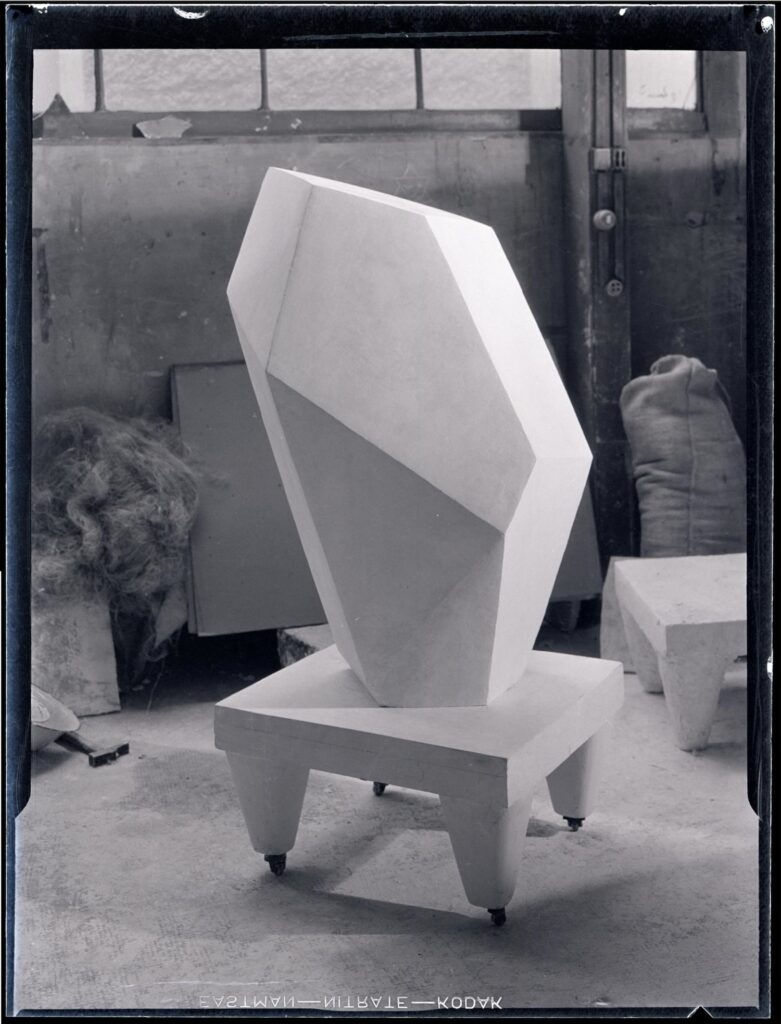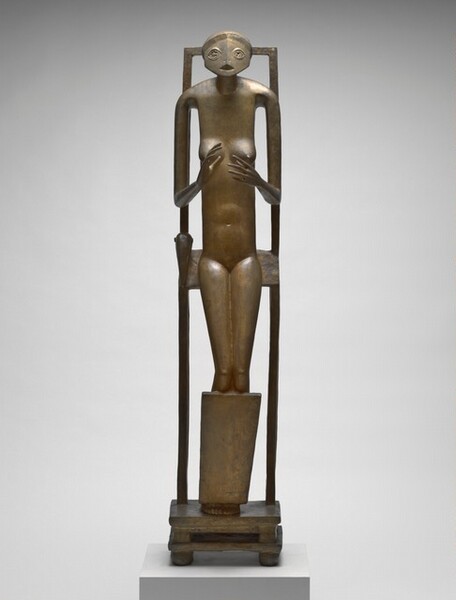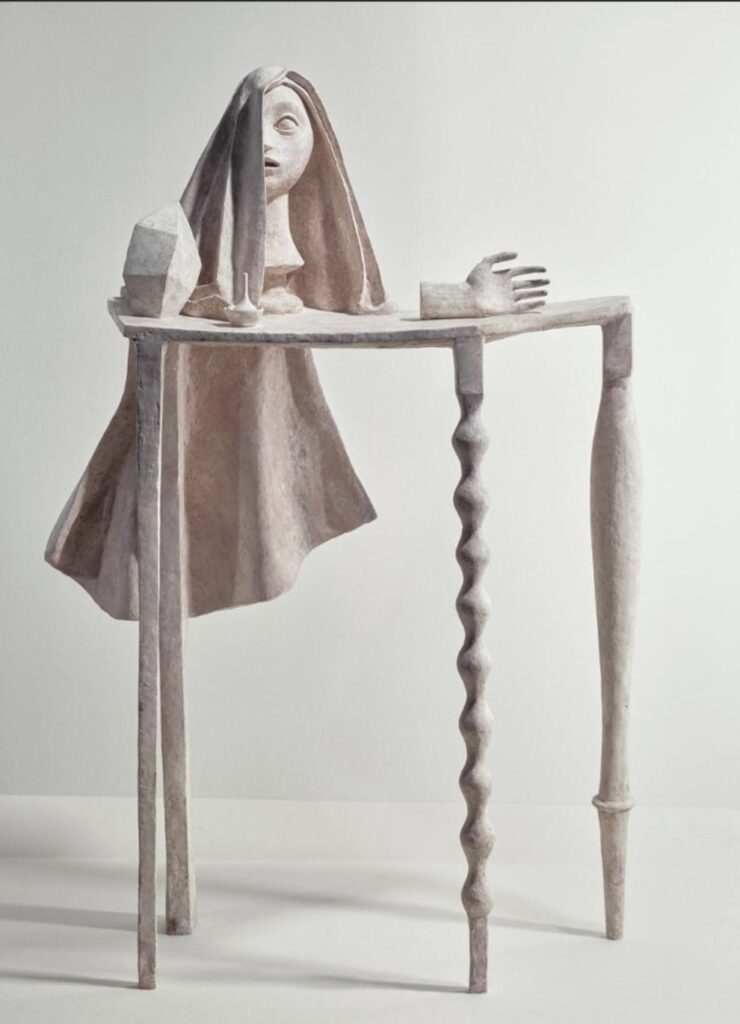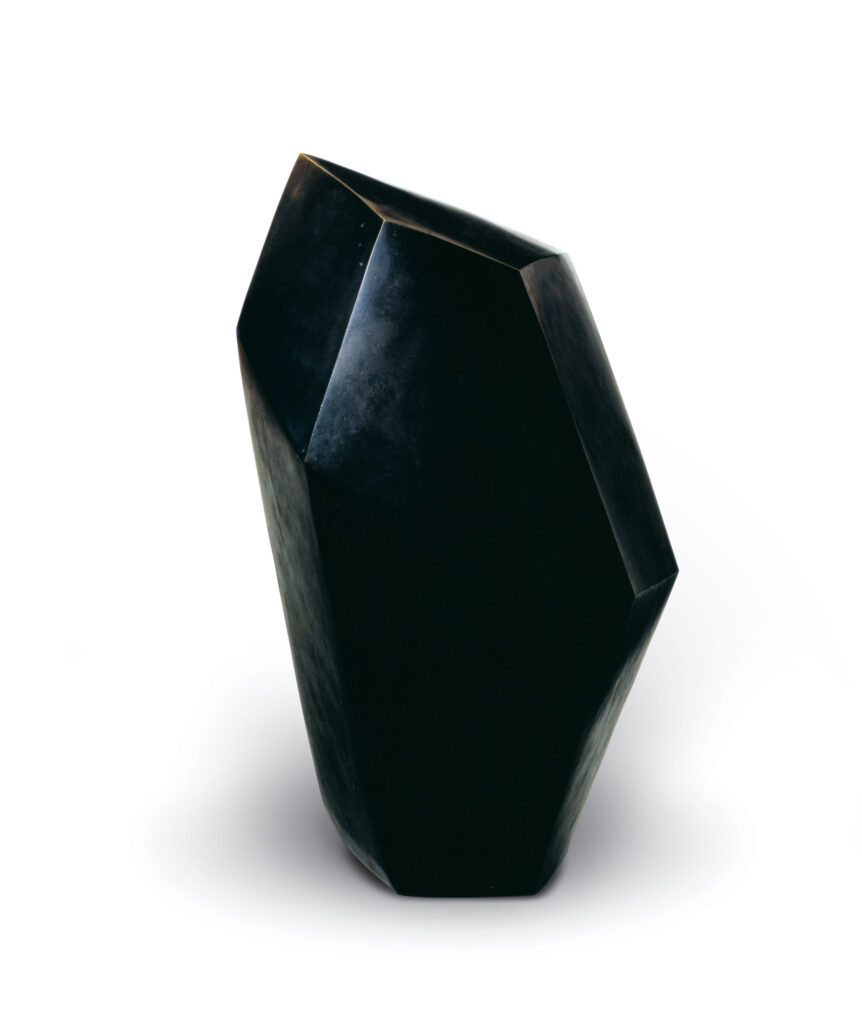
So when I saw this, the earliest photo of Cube, which was taken in Alberto Giacometti’s studio by Man Ray and published in Minotaure in 1934 under the title Nocturnal Pavilion, float by on a timeline somewhere, I thought, hell yeah I’ll repost that. Just let me read Georges Didi-Huberman’s book about it, Le Cube et le Visage, first, for a little value-add.
Four months later update: Wow, seriously? How does art writing like this exist? What is that headspace even like? Maybe I should have just stuck with the old wall text from the Pompidou, which holds one of the two plaster versions of the 94cm tall sculpture that gave Didi-Huberman so much trouble. And, tbf, Giacometti before him.
Setting aside the big chunk of the book’s Freudian phrenology, the gist of Cube is that it troubled Giacometti because it was associated with abstraction, a change in his practice, and the troubled period in which it was created.

Cube came at a moment of Giacometti’s rupture with Surrealists, when a grappled with abstraction and representation, but before he found his mature attenuated mode. [In 1964, on the other side of that work, Giacometti called Cube abstract, but also not abstract, because he had also considered it a head. By that point he’d also made another plaster version, etched a self-portrait into the top face, cast it in bronze, effaced the portrait, and cast it in bronze again.]

The shape—obviously not a cube, but a 13-sided polyhedron—was Giacometti’s own rendition of the odd rhombohedron in Dürer’s print, Melancolia I. From 1933, it appeared in his work in various forms, solid, crystalline, and even invisible. [One interpretation is that it matches the negative space of the hands in The Invisible Object (Hands Holding The Void), 1933.] One version, a pineapple-sized Cube, was part of a sculpture called Table, was on view in Paris in 1933 when Giacometti’s father died.
His father’s death left Giacometti in paralyzing mourning for a year-plus. Among the few works he managed to make were a tombstone for his father, and Cube.

Anyway, Giacometti first showed Cube in 1935 in Lucerne, on the legged pedestal Man Ray photographed, with little piano bench wheels, with the title, Partie d’une sculpture. Then he angsted over it and buried it in his studio for a while. After Giacometti first cast Cube in bronze in 1959, it has always been shown on the ground.
